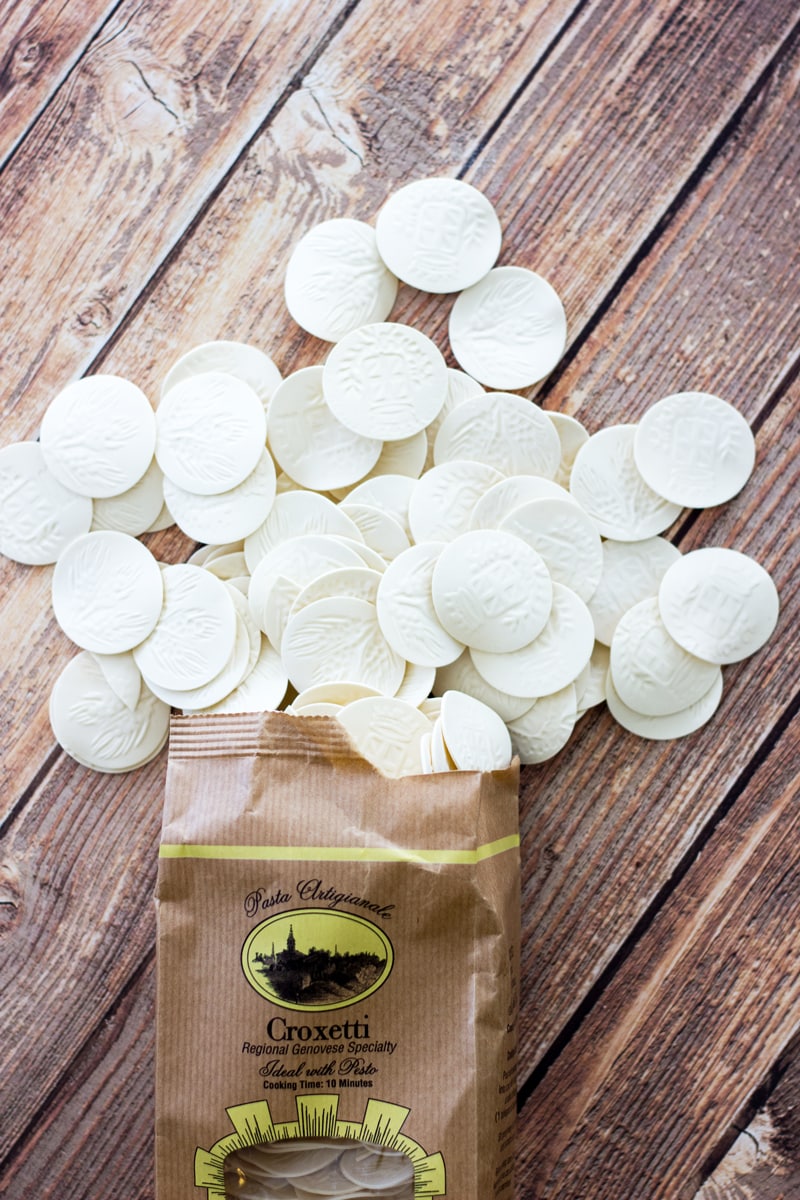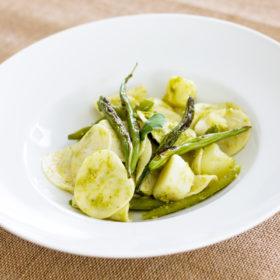In Liguria, many homes have a tradition of serving a particular type of pasta, called Corzetti or Croxetti, imprinted with the family’s coat of arms. It is a tradition that has been handed down for generations since the Renaissance. It is in that historical period, in fact, that the aristocrats asked their cooks to customize the pasta with their own coat of arms as a sign of magnificence and pride.
The protagonists of Ligurian gastronomic history, the corzetti, or in the Genoese dialect, curzetti, today are undoubtedly the most representative pasta type of Ligurian cuisine. Many families still prepare the pasta by hand, usually for Sunday lunch, using a personalized mold.

For this particularity they are also known as “printed corzetti” (or del Levante), to distinguish them from the same type of pasta without imprints, which was the pasta used by the poorest who could not afford to print it.
Corzetti are small circles of pasta in the shape of a medallion on which a design is imprinted using a wooden stamp. In the historic downtown of Genoa, it is still possible to find ancient shops that produce these indispensable molds for preparing corzetti at home.
In the Middle Ages and still today, wood such as maple, beech, apple, or pear are used. The wood used for the construction of the molds must be free of tannin or resins, which would make the flavor of the pasta absolutely unpleasant.
According to tradition, the condiment par excellence of corzetti is minced white meat, onion, celery and bay leaf. But corzetti also goes very well with a classic pesto or mushroom sauce (tocco de funzi).
A different version, however, are the curzetti valpolceveraschi, which are always made in Liguria and have the characteristic small figure eight shape, also called tiè con è die. This pasta is often seasoned with simple tomato sauce and grated cheese (Parmigiano Reggiano or Grana Padano).

It is the delicate aroma of the pesto’s basil for which we must find the ideal pairing. Vermentino, a typical Ligurian white wine, perfectly supports the herb’s scents and natural intensity with pleasant hints of fruit, such as citrus. Looking for a wine outside the region? Try an elegant and richly flavored Verdicchio, with its aromas of dried fruit and almond.